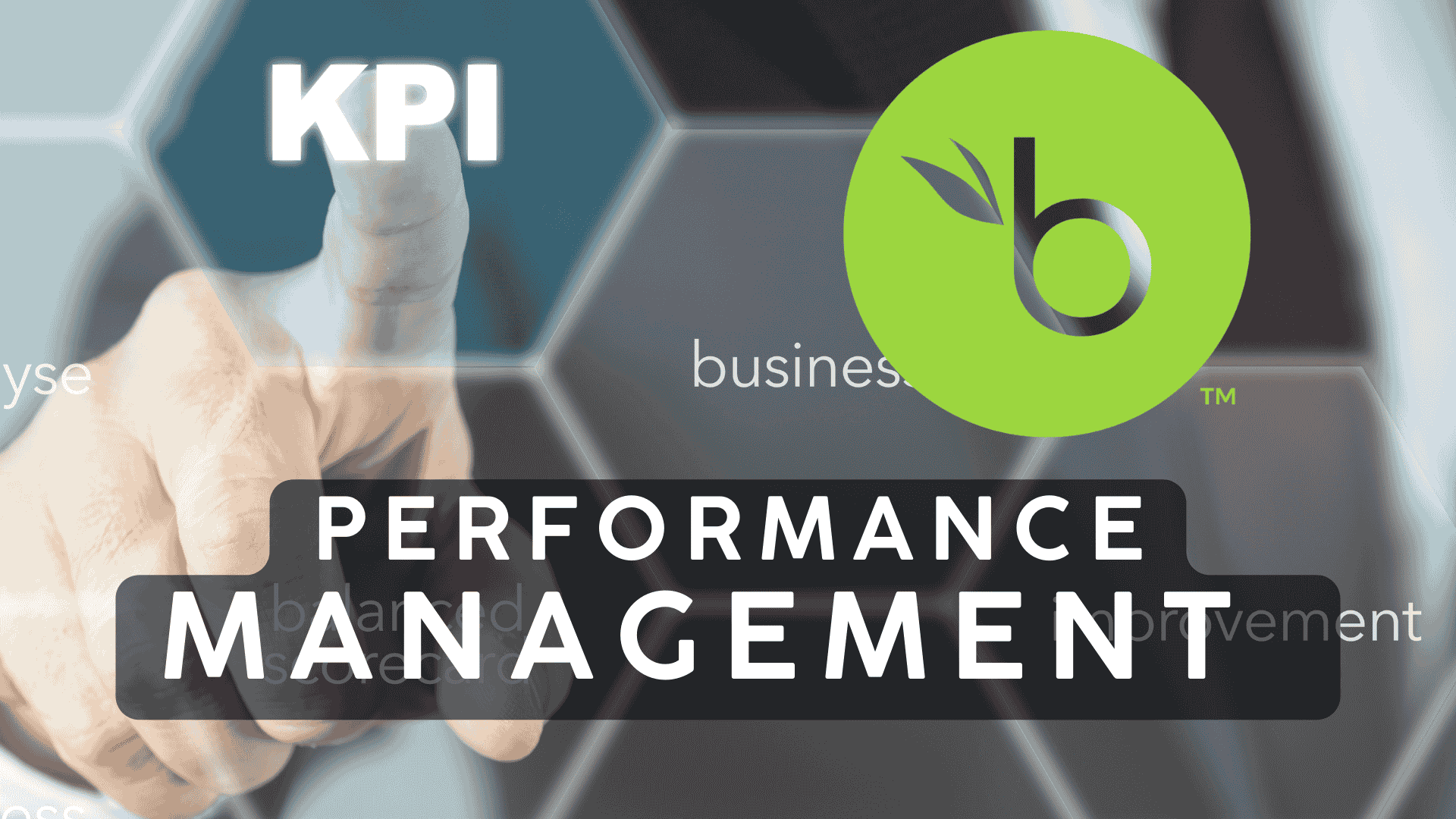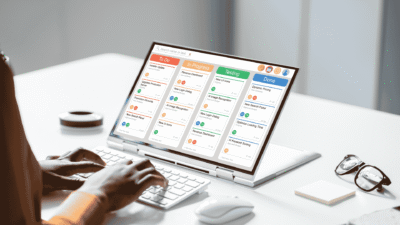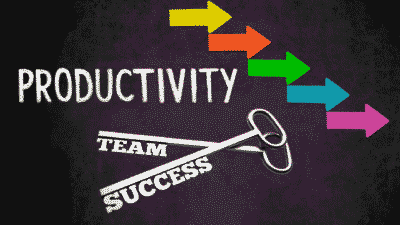Are you finding that your annual performance reviews feel more like a formality than a tool for genuine growth? You are not alone. Many managers find traditional performance management systems to be time-consuming and ineffective at driving real improvement.BambooHR performance management offers a streamlined, continuous approach designed to foster development, not just document past actions. By focusing on frequent feedback, clear goals, and straightforward assessments, this system helps you and your team concentrate on what truly matters: meaningful progress and achieving great results. This guide will walk you through how to leverage BambooHR to build a more effective, engaged, and productive team.
1. Moving Beyond the Annual Review
The old way of saving all feedback for a single, stressful meeting once a year is becoming obsolete. Modern workforce dynamics require a more agile and continuous approach to feedback.
1.1 How to Implement Continuous Feedback
BambooHR performance management is built to support ongoing conversations.[4] Instead of waiting for a formal review, you can provide timely and relevant feedback directly within the platform. To do this effectively, start by scheduling brief, regular check-ins—perhaps bi-weekly or monthly—using the one-on-one scheduling feature.[2] Use these meetings to discuss progress on goals, address immediate challenges, and offer constructive input. The platform allows both you and your team members to add notes and talking points beforehand, ensuring these conversations are focused and productive. This practice transforms feedback from a yearly event into a consistent, supportive dialogue that helps employees know where they stand at all times.
1.2 Using Impromptu Feedback
Sometimes, feedback is most impactful when it is given immediately. Imagine a team member, Mr. Kareem, delivers an exceptional presentation. Instead of waiting for a scheduled check-in, you can use the impromptu feedback feature in BambooHR to send a note of recognition right away. Conversely, if you notice an area for improvement, you can document it privately as a note for your next one-on-one. This immediacy makes the feedback more relevant and actionable. Managers can add up to 10 feedback requests per employee, keeping the process focused and manageable without overwhelming the recipient.
2. Setting Goals That Truly Drive Results
Effective performance management begins with clear, well-defined objectives. Without a target, it is impossible to measure progress. The BambooHR platform provides robust tools to ensure goals are not just set but are also visible, aligned, and actively tracked.
2.1 How to Create and Align Goals
To start, navigate to the “Performance” tab for an employee and select “New Goal.”[9] When defining the goal, ensure it is specific, measurable, achievable, relevant, and time-bound (SMART). For example, instead of a vague goal like “Improve sales,” a better goal would be “Increase qualified leads by 15% in the fourth quarter.”
A powerful feature within BambooHR performance management is goal alignment. As a manager, you can link an employee’s individual goal to a larger team or organizational objective. For instance, if the company’s objective is to improve customer satisfaction, you can help a team member, Mr. Omar, set a goal to reduce his average ticket resolution time by 10%. By aligning his goal with yours, he sees how his individual contribution directly impacts the bigger picture, which is a key driver of engagement.
2.2 Tracking Progress Effectively
Setting a goal is only the first step; tracking it is what ensures it gets accomplished. Employees can update their progress using a simple slider bar and add comments to detail their achievements or obstacles.This visibility allows you to monitor progress without micromanaging. You will receive notifications when goals are updated or completed, enabling you to provide encouragement or support as needed.This transparent process keeps everyone accountable and focused on the desired outcomes.
3. Conducting Meaningful Performance Assessments
While BambooHR champions continuous feedback, it also simplifies and enhances formal assessments. The platform’s tools are designed to reduce bias and make the process more objective and efficient for everyone involved.
3.1 How to Customize Review Cycles
Recognizing that a one-size-fits-all approach does not work, BambooHR allows you to create custom review cycles for different teams or roles. For example, a technical team might benefit from quarterly reviews focused on project milestones, while an administrative team might have a semi-annual review focused on efficiency and process improvements. You can tailor the assessment questions to be relevant to each department’s specific needs, ensuring the feedback gathered is insightful and actionable. You can even add up to ten custom questions to dig into specific company initiatives.
3.2 Leveraging Self and Manager Assessments
The assessment process in BambooHR is straightforward. It begins with both the employee and the manager completing a short evaluation. These assessments are double-blind, meaning neither party can see the other’s responses until both have submitted their own.This design encourages honest and independent reflection. After submissions, the platform highlights any misalignments between the employee’s self-perception and your assessment, providing a clear starting point for a productive conversation. This helps you identify and address disconnects in expectations or performance perception.
4. Utilizing Peer Feedback for a Complete Picture
Feedback solely from a manager provides only one perspective. To gain a holistic view of an employee’s contributions and collaborations, incorporating peer feedback is invaluable. This is often referred to as 360-degree feedback.
4.1 How to Request and Manage Peer Feedback
Within BambooHR, you can request feedback for an employee from their colleagues. You can select peers who work closely with the individual to provide insights on their strengths and areas for improvement.[12] The process is discreet; the feedback is sent only to the manager, who then decides how to best share the insights with the employee in a constructive manner. This anonymity encourages candid responses from peers.
4.2 A Practical Example
Consider a scenario where a project required collaboration between several departments. A project lead, Mr. Faris, demonstrated excellent technical skills, which you observed directly. However, by requesting peer feedback, you might learn from a colleague in another department, Mr. Ibrahim, that Mr. Faris was also exceptionally helpful in explaining complex technical details to non-technical team members. This is valuable information you might not have otherwise received, painting a fuller picture of his contributions and collaborative spirit.
5. Making Data-Driven Decisions with Reports
One of the most powerful aspects of BambooHR performance management is its reporting and analytics capabilities.[16] Gut feelings are not enough when it comes to managing a team; you need data to back up your decisions.
5.1 How to Use Performance Reports
The platform offers various built-in reports that are easy to generate and understand. The Employee Performance Report provides a snapshot of how individuals are performing and how engaged they feel, helping you quickly identify top performers and those who may need additional support.The Company Performance Report gives you a broader view, allowing you to compare performance across different departments, locations, or job titles.
5.2 Turning Insights into Action
Suppose you run a turnover report and notice a higher-than-average rate in a specific department over the last year.Using this data, you can investigate further. By cross-referencing with performance assessment data, you might find that employees in that department consistently report a lack of clarity on goals. Armed with this insight, you can work with the department lead to implement a more structured goal-setting process using BambooHR’s tools. This proactive, data-informed approach allows you to address root causes rather than just symptoms, leading to more sustainable improvements.
***
Conclusion
Shifting from a traditional, once-a-year review to a continuous and dynamic system is essential for developing and retaining talent in today’s environment. BambooHR performance management provides the tools to make this transition seamless and effective. By embracing frequent check-ins, setting aligned goals, conducting meaningful assessments, and leveraging data, you can create a culture where employees feel supported and are genuinely empowered to do their best work. The result is not just a more efficient process, but a more engaged, productive, and successful team.
Frequently Asked Questions (FAQ)
1. What is the core principle of BambooHR performance management?
The core principle is to move away from traditional, infrequent annual reviews towards a continuous performance management model. It emphasizes regular feedback, collaborative goal-setting, and simple assessments to foster ongoing employee development and growth.
2. How does BambooHR handle goal setting?
BambooHR allows both employees and managers to create, track, and collaborate on goals. It features progress bars, milestones, and commenting for continuous updates. A key feature is goal alignment, which lets managers link individual goals to broader team or company objectives, ensuring everyone is working towards a common purpose.
3. What makes the assessment process in BambooHR unique?
The assessment process is designed to be efficient and objective. It uses double-blind self and manager assessments to encourage honest feedback. The system is also highly customizable, allowing for different review cycles and tailored questions for specific departments or roles, making the feedback more relevant.
4. Can I gather feedback from people other than an employee’s direct manager?
Yes, BambooHR supports 360-degree feedback by allowing managers to request confidential feedback from an employee’s peers. This provides a more comprehensive and balanced view of an individual’s performance and contributions beyond what a single manager might observe.
5. How does BambooHR help in making strategic decisions?
The platform provides powerful reporting and analytics tools. Managers can generate reports on employee performance, goal progress, and company-wide trends. This data helps leaders identify areas of success and opportunities for improvement, enabling them to make informed, data-driven decisions about talent management and organizational strategy.
references
Warning: The provided links lead only to the specified content. Other areas of those sites may contain material that conflicts with some beliefs or ethics. Please view only the intended page. Note: The source links are available in English only.
- BambooHR Performance Management Software.
The product page detailing the features of the BambooHR performance management tool. - PCMag May 2, 2024 Author: Rob Watts & Daniel BrameBambooHR Review.
A professional review that covers the performance management capabilities of the software. - Forbes Advisor August 22, 2024 BambooHR Review 2024: Features, Pricing & More.
An in-depth analysis of BambooHR’s features, including its performance management system.







